One last trek and a wild Great Argus
Canopy photoshoot
I don’t know how she did it, but Sam convinced me to get up before 6am on our final day. Our last chance to see gibbons, and we could hear their calls this morning. Up and out in the early light, the world was misty and still, cool after the overnight thunderstorm. Our final trek wasn’t until 8:30am. At the lodge a group were gathered watching something by the river, alas they were birders and the birds were gone. A guide confirmed the songs we could hear were those of gibbons, but that they were miles away and we wouldn’t see them.
Alone we walked the nature trail and then the canopy walk. We were the first to cross the bridge where beautiful dew-drop spider webs spanned our path, we left them intact where we could. Rather crazily I balanced the camera on a slim wooden ledge, focused, set a timer and ran to join Samantha for some photos of the both of us, something we usually forget to do.
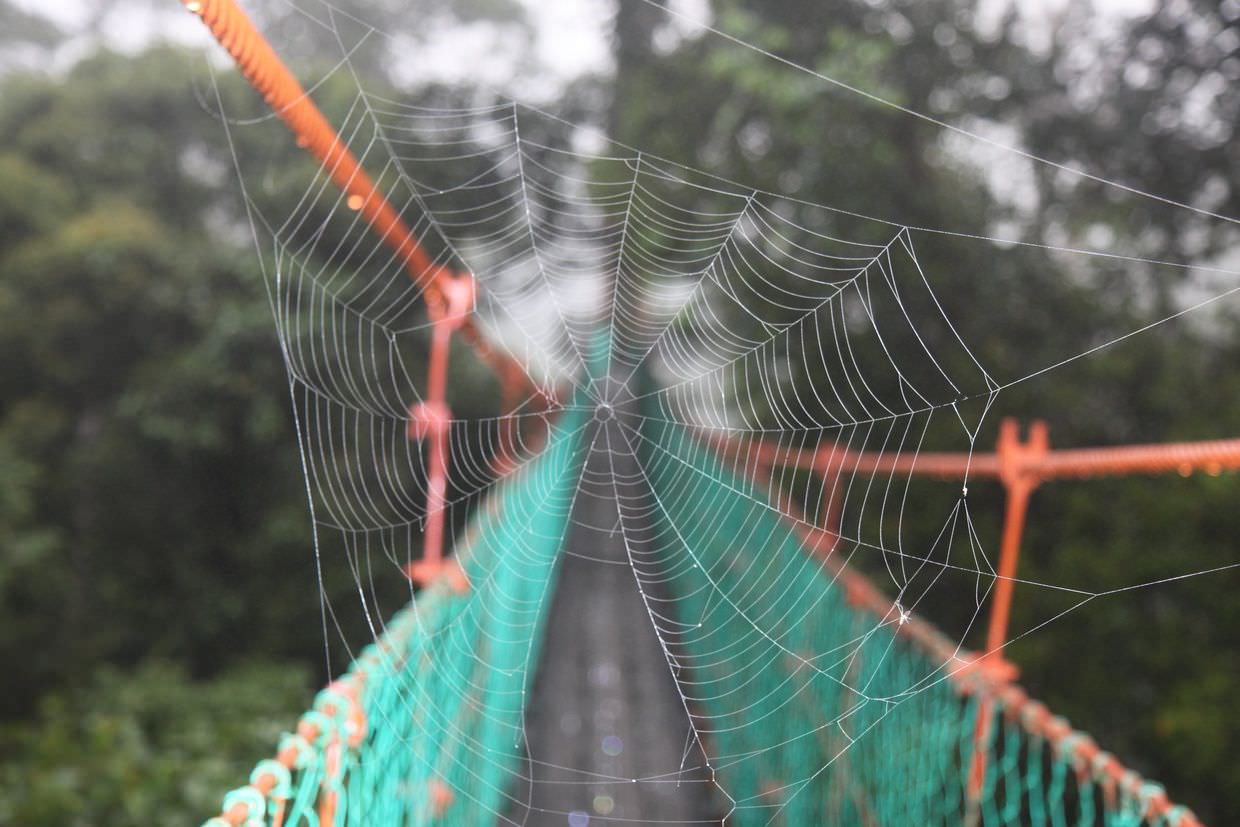
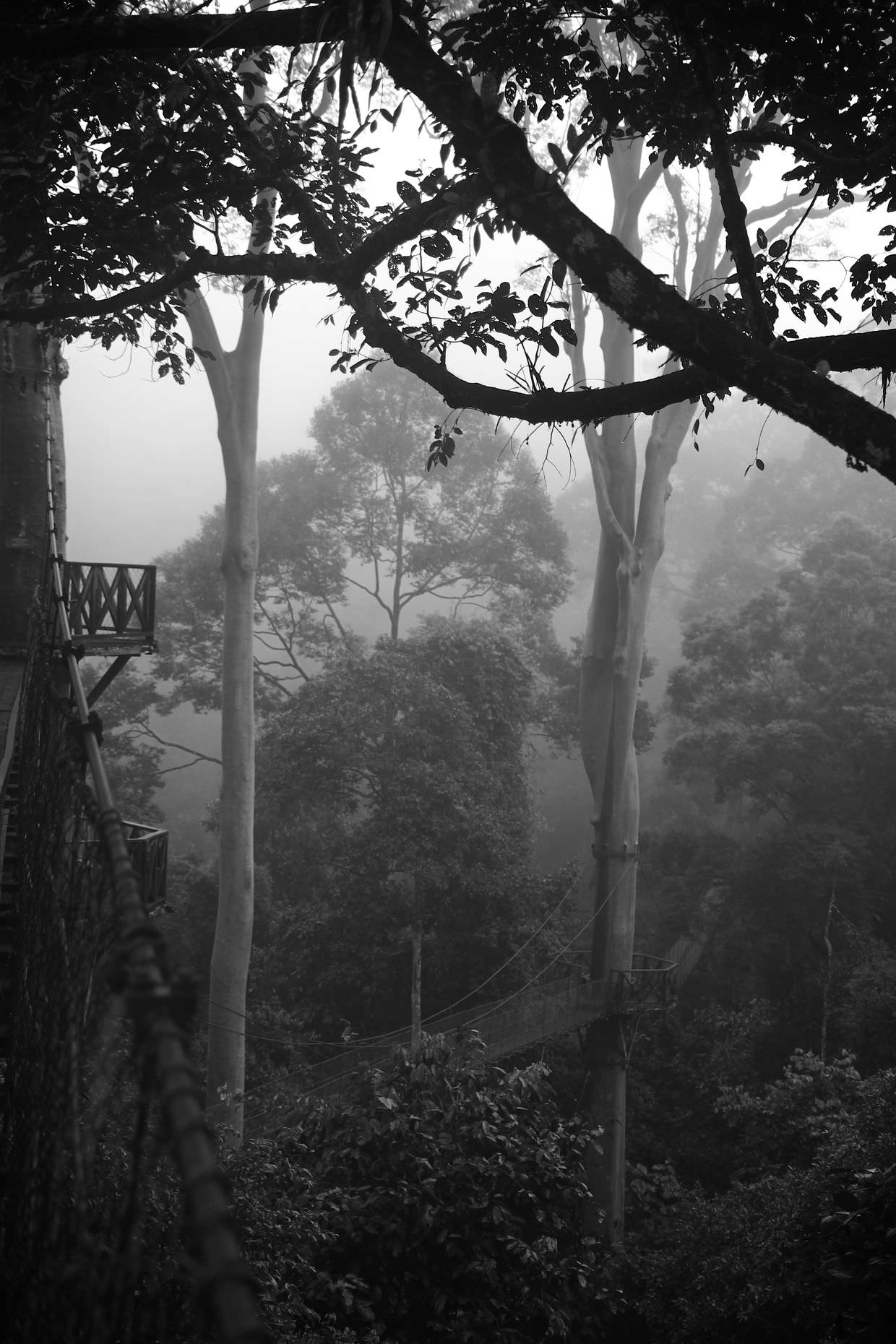
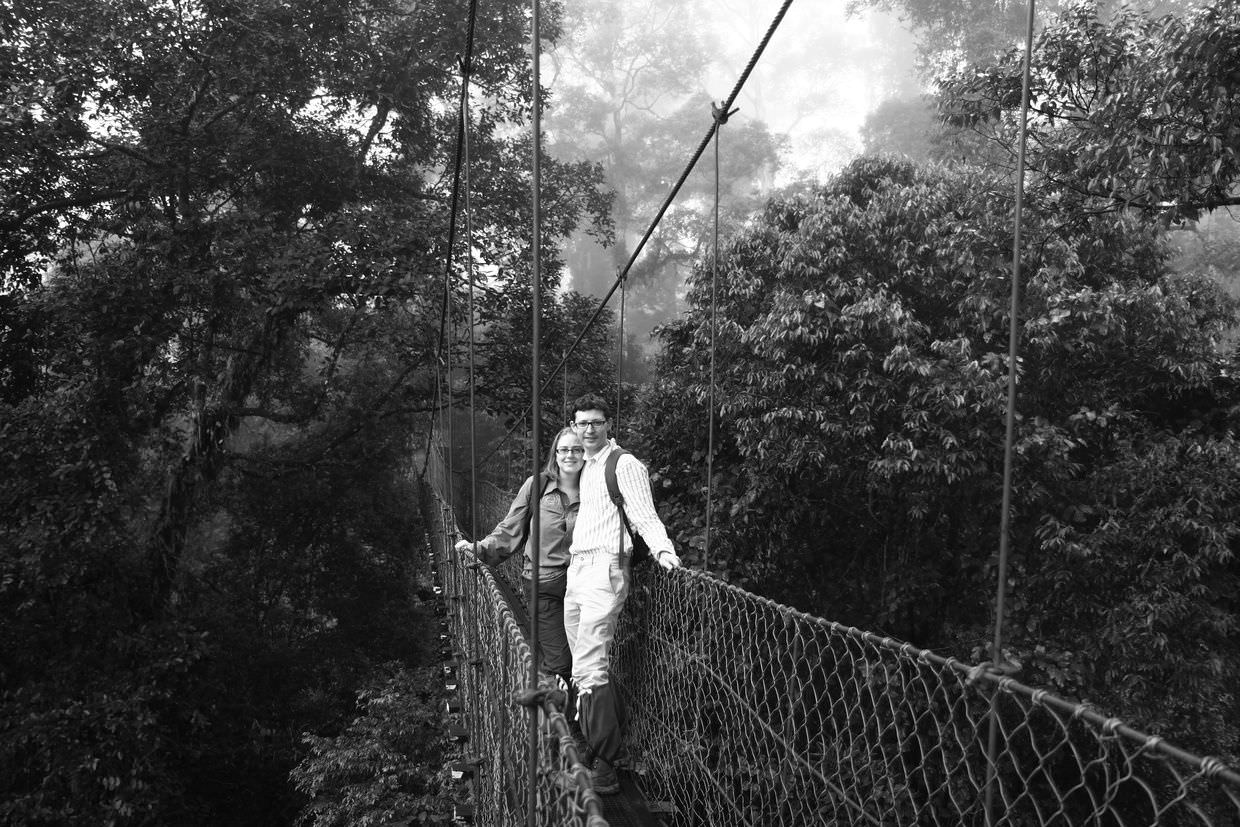
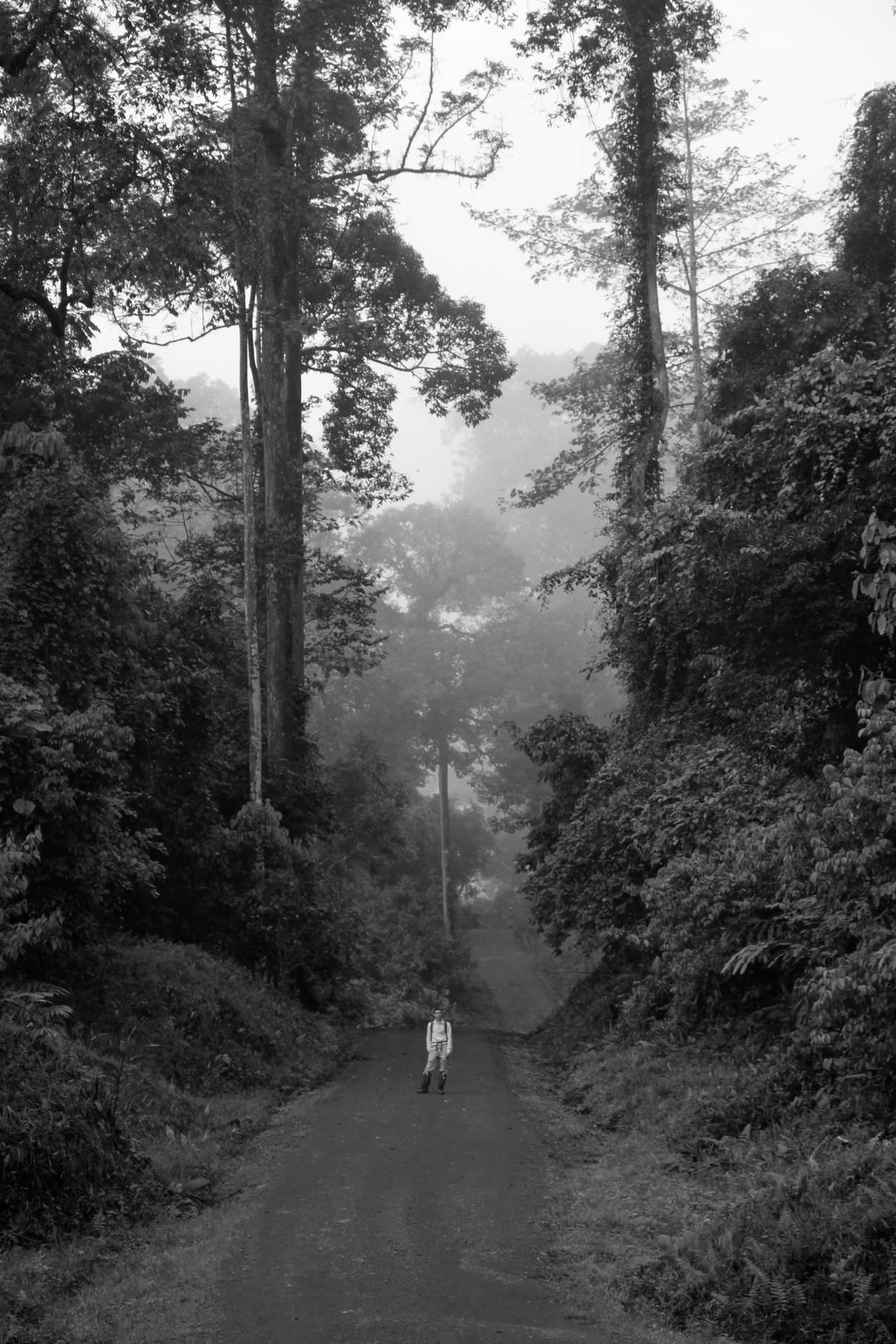
Selamba trail
After breakfast we met Faezen again. He showed us a butler moth that had died in his room. This morning’s trail, our last, was the Selamba trail, followed by a part of the Hornbill trail. For the last time we set-off from the lodge, headed past the staff quarters and along the riverbank. Two new villas were being built, ready for April and an opening ceremony, the Malaysian Prime Minister was coming too. On the trail Faezen explained how tribes made blow pipes from ironwood (a branch is placed upright in a waterfall, which erodes away the fleshy inner part to create a tube, it only takes 6 months). On the floor were “fake durian”, black rotten husks that don’t contain any fruit (and didn’t smell).
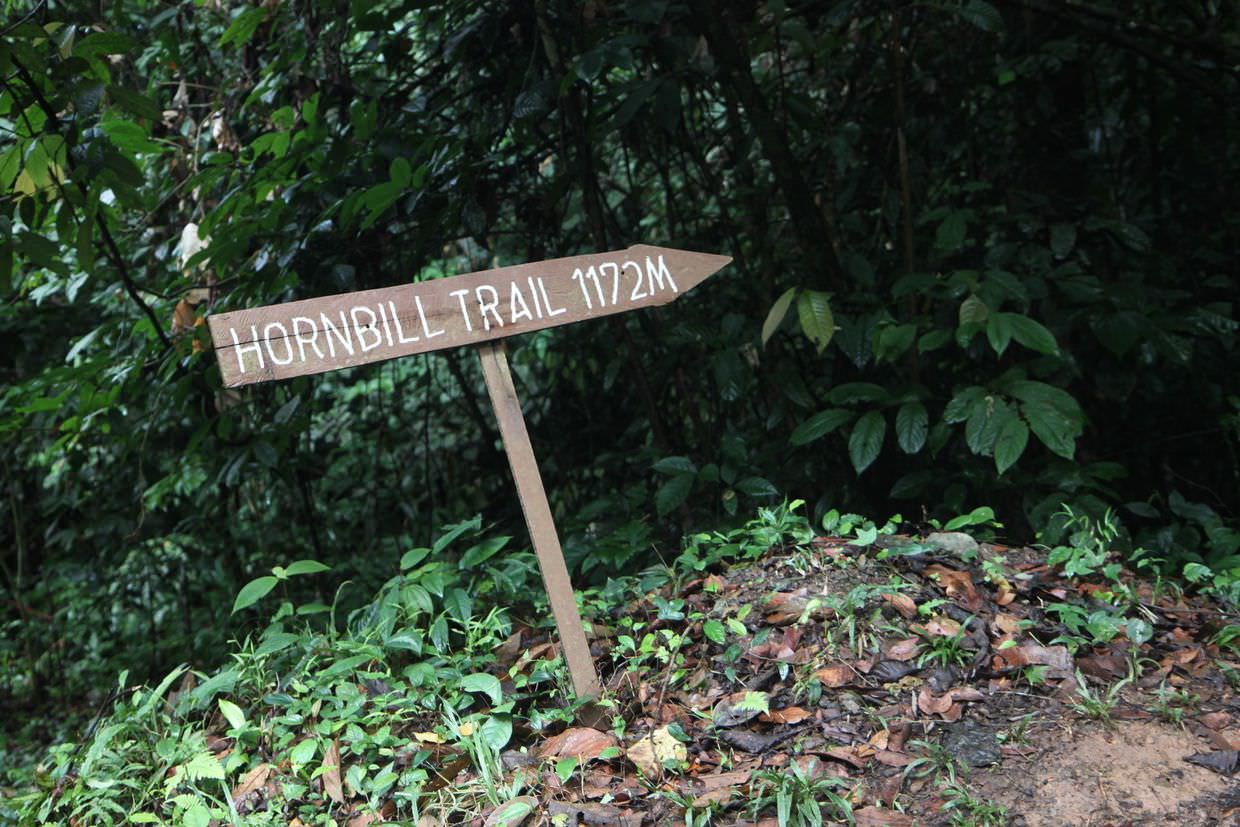
The Great Argus
Emerging from the Selamba trail, Faezen spoke on his walkie-talkie and marched us quickly down the road to the Hornbill trail. His friend, another guide, had found something we should see. In-sight of that guide, who stood looking through his camera on a tripod, we walked slowly and silently to him, my eyes were drawn to movement in the trees, but that’s not what he was looking at, that was red leafed monkeys swinging away. Instead, magically, he was transfixed on an enormous bird stood in the middle of the trail. It had a blue head with a silver mohican, a golden brown chest and enormous spotted feathers reaching out behind — like those of a peacock. It was the elusive and rare Great Argus, a bird I’d read about but never dreamed of seeing. In the clearing the Argus was tidying away the dead leaves, preparing a space to dance in, to impress and woo a female. The mating call is beautifully simple, a two-toned caw, unmistakeable. For a wonderful 45 minutes we stood and watched the bird, waiting and hoping that it might dance. A few times it looked like he was about to start, he ruffled his feathers and hopped, but then resumed tidying. He had an audience, just not the one he wanted, and despite his caws no female ever came. This was without doubt one of the most amazing things either of us had ever seen, unforgettable.
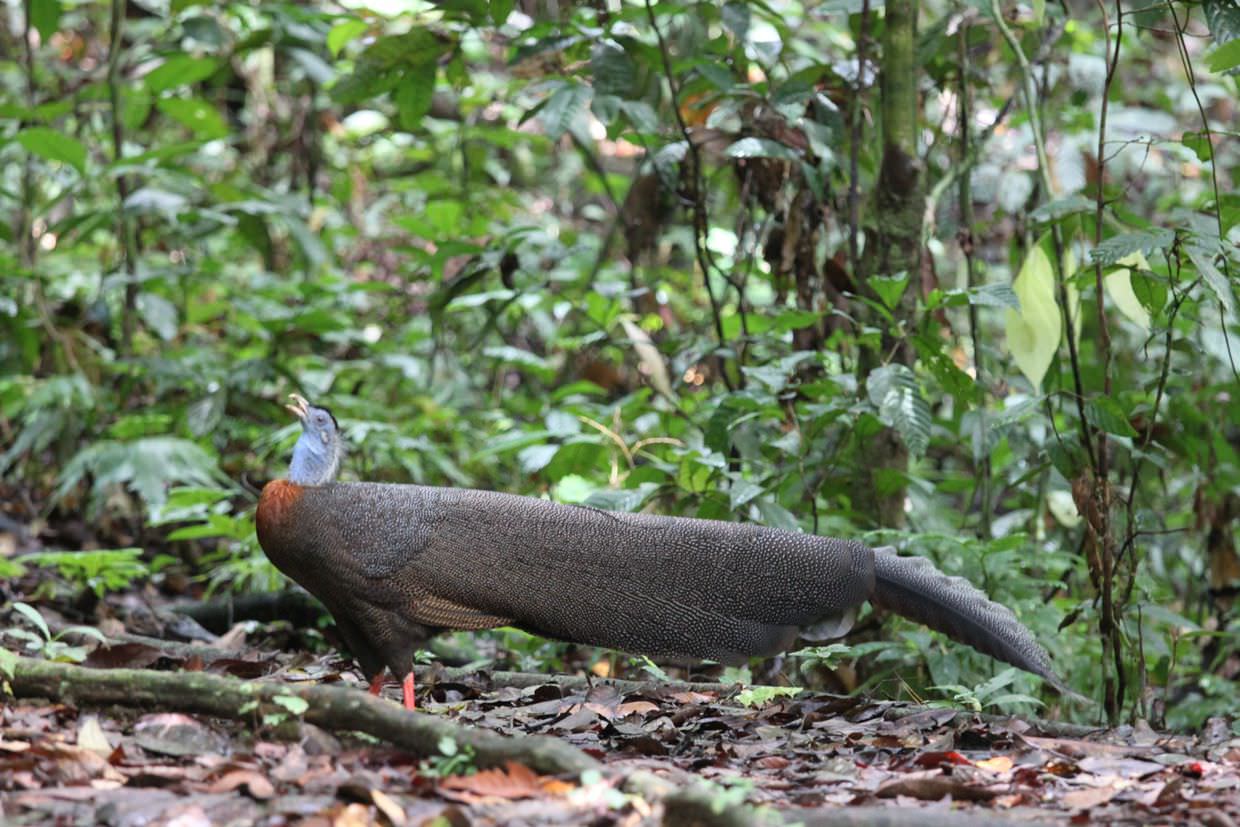

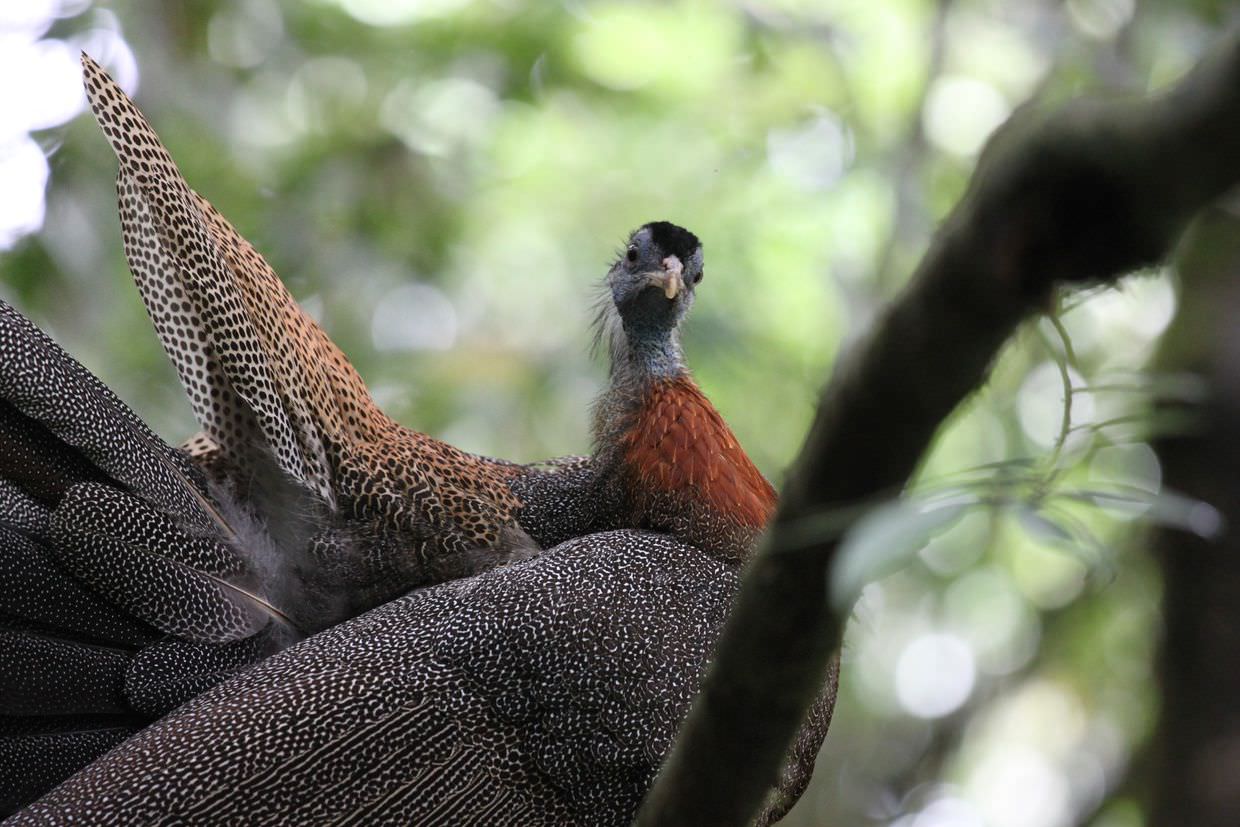
Eventually we had to leave, but on the way out we had another surprise. On the forest floor a tiny blue and red bird moved about, this too was a rare bird, endemic to Borneo it was a blue-headed pita. And once again we were lucky to see it, and then it was gone, our last wildlife spotting at the Borneo Rainforest Lodge. What a way to end the trip.
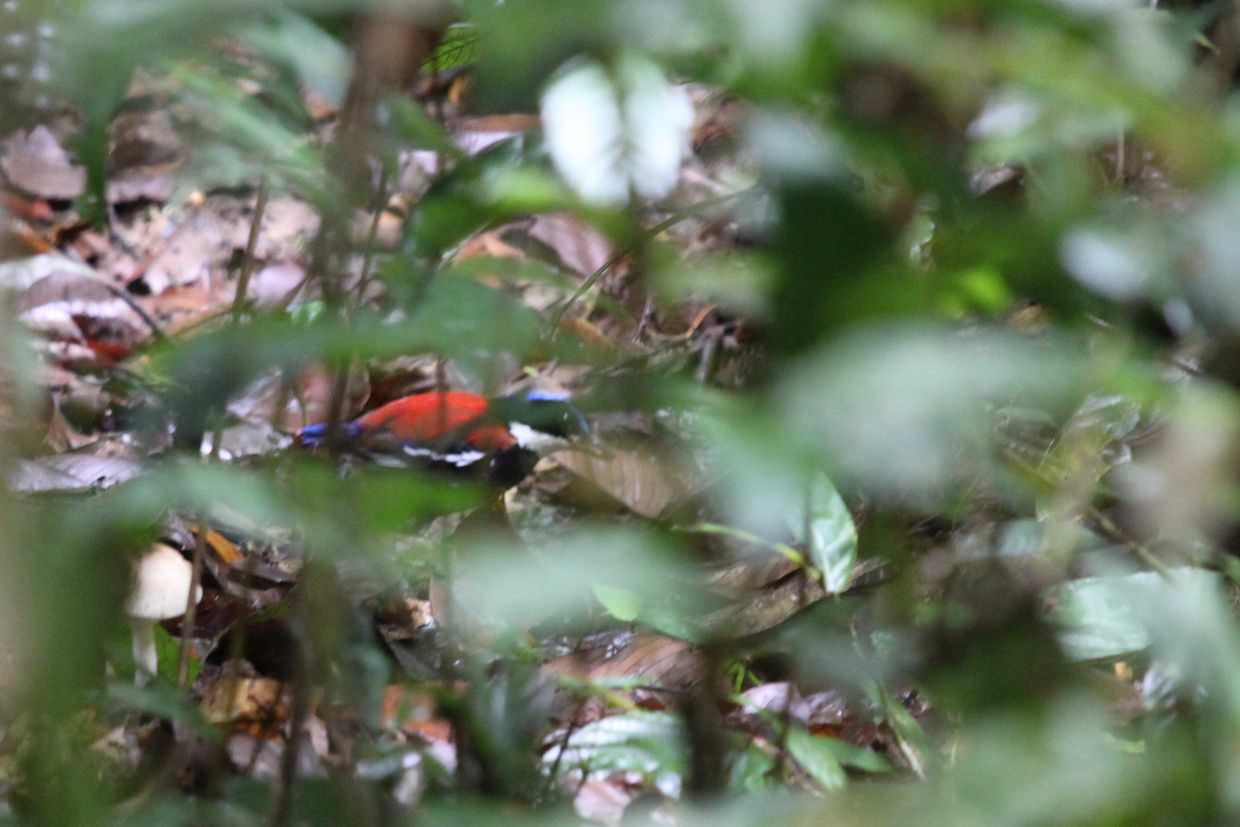
Concrete jungle
The Borneo Rainforest Lodge is a very special, secluded though exclusive place in the heart of virgin rainforest. I do desperately wish to return, seeing wildlife, however long you have to wait, or however fleeting, is magical. By 1pm we’d packed up our room, had lunch and were climbing into a minibus for the 2h30 drive back to Lahad Datu. Two flights later and by 2am we were back in the concrete jungle that is Kuala Lumpur, otherworldly.